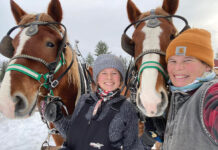 If you get a great shot at a horse show, be proud of it. Show grounds are the single most difficult spot to take good pictures. Everything is out of your control, the backgrounds are busy and filled with distraction, the angle of light is not always on the prettiest section of the ring and just when you have your shot lined up the ringmaster calls for a change of direction. Learning to work with what you have on any given day is all part of learning to take better pictures.
If you get a great shot at a horse show, be proud of it. Show grounds are the single most difficult spot to take good pictures. Everything is out of your control, the backgrounds are busy and filled with distraction, the angle of light is not always on the prettiest section of the ring and just when you have your shot lined up the ringmaster calls for a change of direction. Learning to work with what you have on any given day is all part of learning to take better pictures.
The most common angles to capture will be a side view or a three quarter view as they come around a corner. I try to avoid a straight on shot as it makes the rider look like they are coming out of the horses head, and it isn’t very pleasing. How you shoot the horse’s leg action in the ring will depend on breed and discipline. Saddle seat riders always love a trotting shot with the front knee caught at its highest action. These shots take careful timing and you will need to practice with your camera to get it right. You have to preshoot because by the time you see the action you want, it is already too late. Each camera is different. How much lag time your camera has or how many frames per second it can shoot will be found in the specifications section of your manual.
Tennessee Walking Horse owners like to see one front leg raised but both hind feet still on the ground. Dressage riders want to see impulsion at the extended trot. A good photographer has to learn the classic pose of each horse breed and riding discipline that they shoot.
If the backgrounds are busy try panning, a technique I explained in an earlier tips column. Sometimes lovely images can be created behind the scenes or at the warm-up ring. Walk around and investigate the show grounds from all the different angles. Sometimes you find the prettiest pictures in the most unlikely of places.
Back to Dusty’s photo tips >>






Great advice.